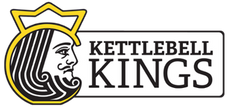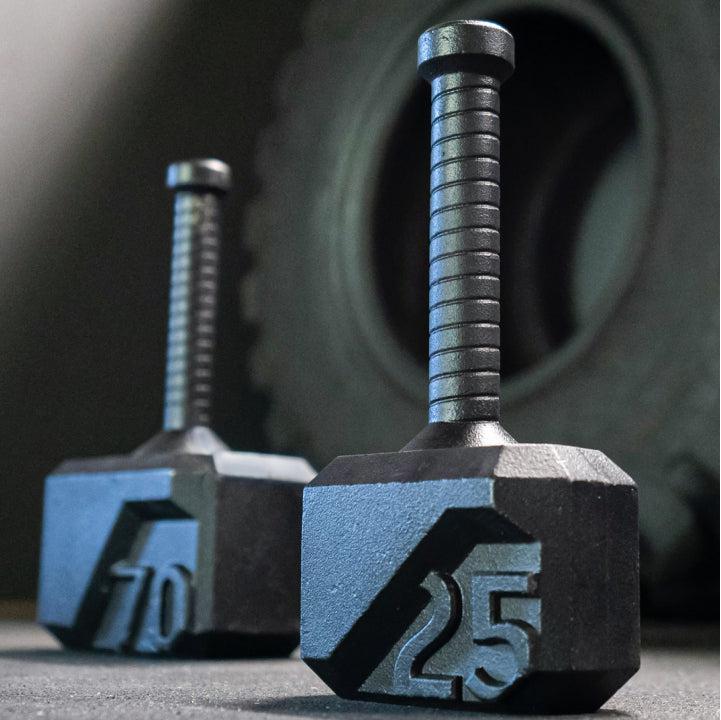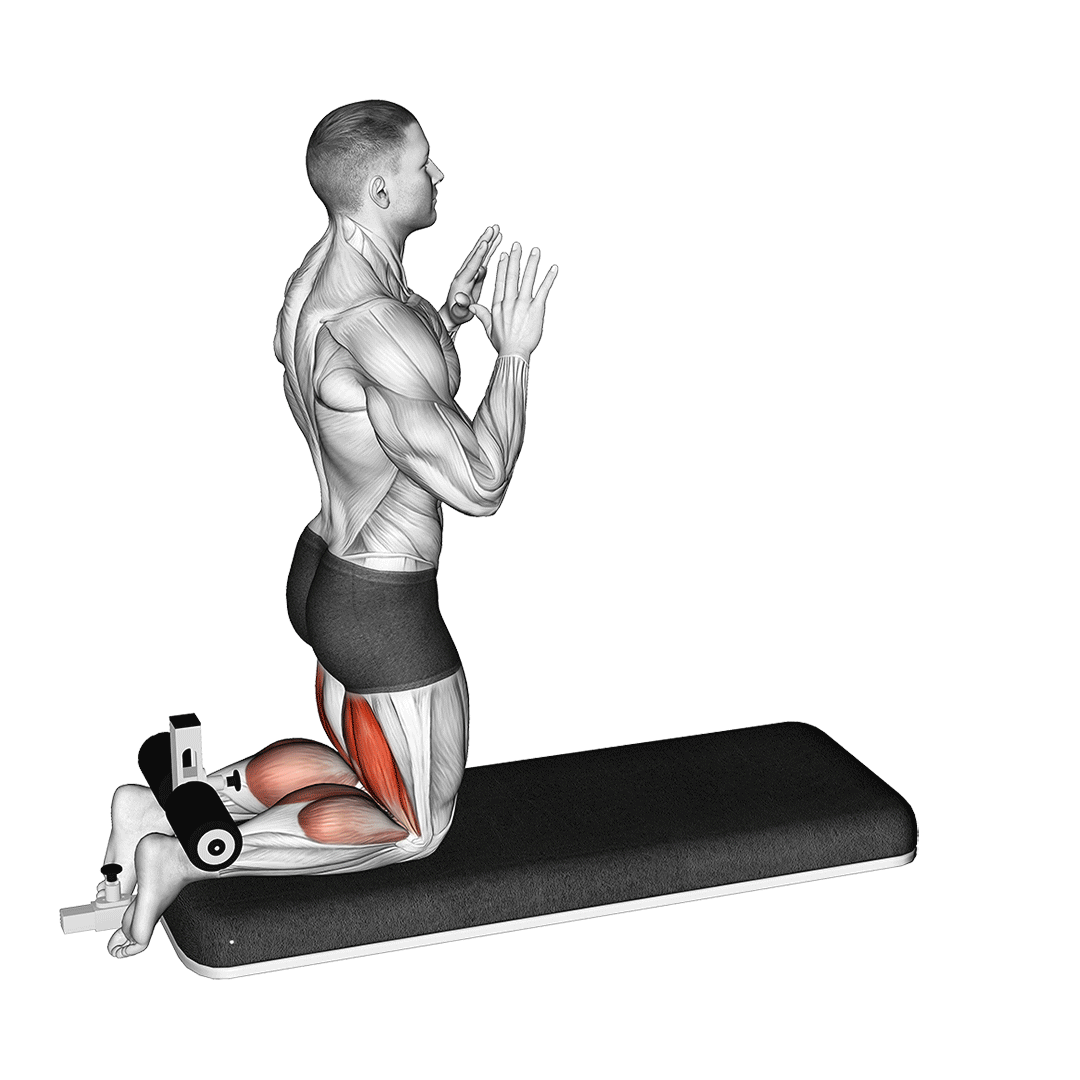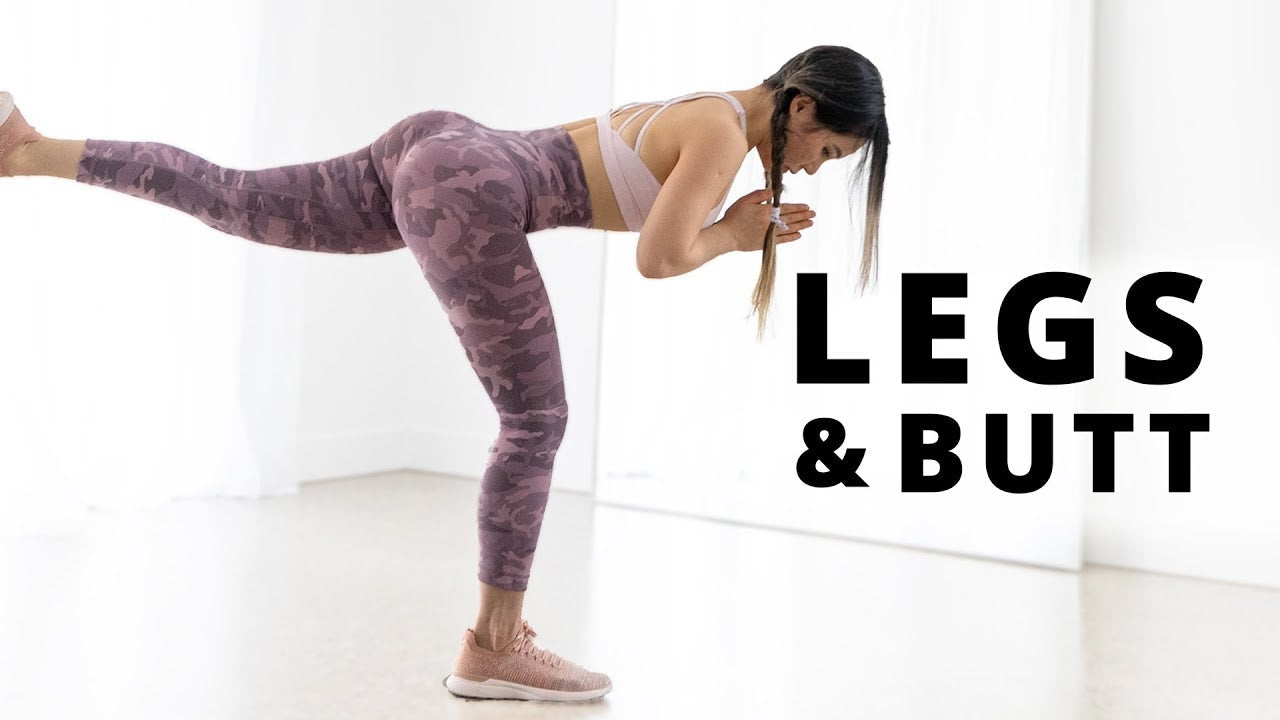When you think of a strong and chiseled core, your upper abs play a pivotal role. These muscles are not only aesthetically pleasing but also crucial for overall strength and stability. In this comprehensive guide, we'll delve into the world of upper abs, understanding their importance, and the science behind them, and provide you with a detailed upper abs workout regimen to help you achieve the core of your dreams.
Anatomy of the Upper Abs
Before we dive into workouts, let's get acquainted with the anatomy. The upper abs, scientifically known as the rectus abdominis, are the pair of muscles that run vertically down your abdomen. They are located in the upper part of the abdominal region, just below the ribcage.
Differentiating Upper Abs from Lower Abs
The main difference between upper and lower abs lies in their location within the abdominal region and their respective roles. The upper abs are positioned in the upper part of the abdomen, just below the ribcage. They are primarily responsible for flexing the spine, which involves activities like lifting your torso off the ground during a sit-up.
In contrast, the lower abs are located in the lower part of the abdomen, closer to the pelvis. They play a crucial role in pelvic tilting and lifting the legs. While exercises can engage both upper and lower abs, focusing on specific movements can emphasize development in either region. Understanding this distinction is essential for crafting a well-rounded core workout routine.
The Ultimate Upper Abs Workout
1. Crunches
Crunches are a popular abdominal exercise that primarily targets the rectus abdominis, helping to strengthen and define your core muscles.
How to do Crunches:
- Lie on your back with your knees bent and feet flat on the floor.
- Place your hands behind your head or lightly touching your temples.
- Lift your shoulders off the floor by contracting your abdominal muscles.
- Exhale as you crunch and hold for a moment.
- Inhale as you return to the starting position.
Benefits:
- Targets the upper abdominal muscles.
- Enhances core strength and stability.
- Improves posture and supports lower back health.
Variations:
- Butterfly Crunch: Place the soles of your feet together and let your knees fall out to the sides.
- Cross-Crunch: Bring your elbow to the opposite knee in a twisting motion.
2. Reverse Crunches
Reverse crunches focus on the lower abdominal muscles and are effective for developing core strength and stability.
How to do Reverse Crunches:
- Lie on your back with your knees bent at a 90-degree angle.
- Keep your hands by your sides or under your hips for support.
- Lift your hips off the ground while bringing your knees toward your chest.
- Lower your legs back to the starting position.
Benefits:
- Targets the lower and upper abs.
- Enhances lower back and hip flexor strength.
- Improves overall core stability.
Variations:
- Straight Leg Reverse Crunch: Keep your legs straight while lifting your hips off the ground.
- Weighted Reverse Crunch: Hold a weight between your feet for added resistance.
3. Leg Raises
Leg raises are an exercise that works the lower abdominal muscles and hip flexors. They are known for enhancing lower ab strength and overall core stability.
How to do Leg Raises:
- Lie on your back with your legs straight.
- Lift your legs straight up toward the ceiling while engaging your upper abs.
- Lower your legs back to the starting position.
Benefits:
- Concentrates on the upper abs and hip flexors.
- Enhances lower ab strength and overall core stability.
- Can be adapted for different fitness levels.
Variations:
- Lying Leg Raises: Lie on your back, lift your legs, and lower them slowly to the ground for control.
4. Hanging Leg Raises
Hanging leg raises are an advanced version of leg raises. They engage the lower abs and require hanging from a bar or other equipment.
How to do Hanging Leg Raises:
- Hang from a pull-up bar with a firm grip.
- Keep your legs straight and lift them until they are parallel to the ground.
- Slowly lower your legs back to the starting position.
Benefits:
- Targets the upper abs effectively.
- Develops grip strength.
- Engages the lower abs and hip flexors.
Variations:
- Hanging Knee Raises: Bend your knees and raise them toward your chest.
5. Bicycle Crunches
Bicycle crunches are a dynamic core exercise that engages both the upper and lower abdominal muscles. They are effective for building core strength and improving flexibility.
How to do Bicycle Crunches:
- Lie on your back with your hands behind your head.
- Bring your elbow to the opposite knee in a pedaling motion.
- Alternate sides.
Benefits:
- Targets both the upper abs and obliques.
- Enhances core strength and flexibility.
- Incorporates a twisting motion for oblique engagement.
Variations:
- Double Bicycle Crunch: Extend both legs outward simultaneously before bringing your elbow to the opposite knee.
6. Planks
Planks are an isometric exercise that strengthens the entire core, including the rectus abdominis, obliques, and lower back. They are excellent for core stability.
How to do Planks:
- Standard Plank: Begin in a push-up position with your forearms on the ground and hold your body in a straight line.
- Side Plank: Support your body on one forearm while stacking your feet or placing one in front of the other.
- Forearm Plank: A variation of the standard plank that reduces wrist strain.
Benefits:
- Engage the entire core, including the upper abs and obliques.
- Improve core endurance and stability.
- Can be tailored to various fitness levels.
Variations:
- Side Plank with Leg Lift: Lift your top leg while in a side plank.
- High Plank: Perform a plank on your hands rather than forearms.
- Plank with Shoulder Taps: Tap your opposite shoulder with your hand while in a standard plank.
7. Dragon Flags
Dragon flags are an advanced bodyweight exercise that targets the core and requires significant strength and control to execute.
How to do Dragon Flags:
- Lie on a bench or sturdy surface
- Hold onto the edge with your hands
- Lift your legs, and lower them back down.
Benefits:
- Targets the entire core, including the upper abs and lower abs.
- Develops exceptional core strength and stability.
- Improves body control and enhances overall athleticism.
Variations:
- Half Dragon Flag: Instead of lowering your legs all the way down, stop at a 45-degree angle to make it less challenging.
- Full Dragon Flag: Lower your legs all the way to the ground for a more advanced version.
8. V-Ups
V-ups are an exercise that engages the upper and lower abdominal muscles, requiring you to lift both your upper and lower body simultaneously.
How to do V-Ups:
- Lie on your back with your arms extended overhead and legs straight.
- Simultaneously lift your legs and upper body to create a V shape.
- Reach your hands toward your toes.
Benefits:
- Engages the upper and lower abs to create a V shape.
- Strengthens the entire core and improves balance.
- Enhances flexibility in the hip flexors and hamstrings.
Variations:
- Tuck-Up: Bend your knees and pull them toward your chest to perform a tuck-up.
9. Weighted Cable Crunch
Weighted cable crunches are an exercise using a cable machine to add resistance to traditional crunches, intensifying the workout for your core muscles.
How to do Weighted Cable Crunch:
- Attach a rope to a cable machine.
- Kneel down facing the machine, holding the rope behind your neck.
- Keep your hips stationary and crunch your upper body forward while keeping tension on the abs.
Benefits:
- Adds resistance to standard crunches for increased upper ab strength.
- Targets the upper abs while challenging core stability.
- Provides progressive overload for muscle growth.
Variations:
- You can use different attachments like a straight bar or a handle for variation.
10. Abdominal Rollouts
Abdominal rollouts are performed with an exercise wheel or similar equipment and are excellent for strengthening the entire core and improving stability.
How to do Abdominal Rollouts:
- Use an ab wheel or similar device.
- Start on your knees and hold the handles of the ab wheel.
- Roll out while engaging your upper abs to return to the starting position.
Benefits:
- Engages the upper abs during the rollout phase.
- Strengthens the entire core and improves stability.
- Challenges the shoulders and triceps.
Variations:
- Kneeling Rollouts: Roll out from a kneeling position for a less advanced version.
- Standing Rollouts: A more advanced version where you stand to perform rollouts.
11. Hollow Hold
The hollow hold is an isometric exercise that focuses on maintaining a specific body position to engage and strengthen the core muscles.
How to do Hollow Hold:
- Lie on your back with your arms extended overhead and legs straight.
- Simultaneously lift your head, shoulders, and legs slightly off the ground.
- Maintain a "hollow" body shape, with your lower back pressed into the floor.
Benefits:
- Engages the entire core, including the upper abs.
- Enhances core stability and posture.
- Improves body control and awareness.
Variations:
- Hollow Rock: Add a rocking motion while holding the hollow position.
- Flutter Kicks: Alternate small leg kicks while maintaining the hollow position.
Sample Upper Abs Workout Plans
Beginner Routine (3 times a week)
- Crunches: 3 sets of 15 reps
- Leg Raises: 3 sets of 10 reps
- Planks: 3 sets, holding for 30 seconds
Intermediate Routine (4 times a week)
- Bicycle Crunches: 4 sets of 20 reps
- Hanging Leg Raises: 4 sets of 12 reps
- Russian Twists: 3 sets of 15 reps (each side)
Advanced Routine (5 times a week)
- Dragon Flags: 5 sets of 5 reps
- Planks: 4 sets, holding for 45 seconds
- Bicycle Crunches: 4 sets of 25 reps
Workout Form and Technique
Proper form and technique are the keys to success and safety in upper abs workouts. Renowned fitness trainer Lou Schuler emphasizes:
- Maintain a flat back during exercises like crunches.
- Avoid straining your neck by supporting your head with your hands.
- Use controlled, deliberate movements to prevent jerking.
- Remember to breathe regularly and engage your core muscles.
Common Mistakes to Avoid
Beware of common pitfalls that can hinder your progress:
- Overtraining upper abs without balancing lower abs and oblique workouts.
- Neglecting your diet, as even the best workouts won't reveal your abs if they're hidden by excess body fat.
- Avoid using momentum; prioritize controlled movements for effective workouts.
- Excessive repetitions don't equate to better results; focus on quality exercises and form.
Tracking Progress
Stay motivated and measure your progress using these techniques:
- Take before-and-after photos to visually track changes.
- Keep a workout journal to record sets, reps, and weights.
- Use fitness apps or wearable devices for monitoring.
Nutrition for Upper Abs
Your nutrition plays a fundamental role in achieving visible and well-defined upper abs. Here, we'll delve into the crucial aspects of nutrition for upper abs development, including the role of a balanced diet, foods that support ab development, and the importance of hydration.
The Role of a Balanced Diet
A balanced diet is the cornerstone of achieving upper abs that are both strong and visible. The following points emphasize the significance of maintaining a balanced diet for your upper abs development:
Caloric Balance
To reveal your upper abs, you need to reduce overall body fat. This begins with maintaining a caloric deficit – consuming fewer calories than you burn. However, it's essential to do so in a sustainable and healthy manner to avoid crash diets and maintain energy levels.
Macronutrient Balance
A balanced diet should include an appropriate balance of macronutrients. Proteins, in particular, are vital for muscle repair and growth, which is essential for building strong upper abs.
Fiber-Rich Foods
High-fiber foods, such as whole grains, fruits, and vegetables, are excellent for appetite control and overall weight management. They provide a feeling of fullness and contribute to healthy digestion.
Moderation
Practicing portion control and avoiding overindulgence in high-calorie, low-nutrient foods is vital. Opt for nutrient-dense options that provide the essential vitamins and minerals your body needs.
Foods that Support Ab Development
Certain foods can aid your upper abs development by promoting fat loss and muscle growth.
Here are some dietary choices that support your upper abs goals:
- Include sources like chicken, turkey, lean cuts of beef, fish, and plant-based protein options like tofu. Proteins are essential for muscle repair and growth.
- Opt for whole grains such as brown rice, quinoa, and oats. Complex carbohydrates provide sustained energy for your workouts and daily activities.
- Incorporate sources of healthy fats, like avocados, nuts, seeds, and olive oil. These fats offer satiety and contribute to overall health.
- Choose low-fat or non-fat dairy products as they are good sources of protein and calcium.
- A variety of colorful vegetables provide essential vitamins, minerals, and fiber. They are low in calories and high in nutrients.
- Berries, apples, citrus fruits, and other options deliver vitamins, antioxidants, and fiber. They make for a healthy and satisfying snack.
- Post-workout protein shakes can be beneficial, especially if you struggle to meet your protein needs through whole foods. They aid in muscle recovery and growth.
Importance of Hydration
- Hydration is a fundamental element of your nutrition strategy for upper abs development. Staying properly hydrated serves various purposes:
- Adequate hydration supports digestion, ensuring that your body can absorb and utilize nutrients efficiently.
- Good hydration promotes optimal blood flow, which is essential for muscle function and recovery.
- Staying well-hydrated provides you with the energy you need to perform well during workouts.
- Hydration is vital for the recovery process, helping your muscles repair and grow.
To maintain proper hydration, aim to consume an adequate amount of water throughout the day, with particular attention given to the periods before, during, and after your upper abs workouts. Dehydration can hinder your performance and make it challenging to get the most out of your exercise
Supplements for Upper Abs
- Consider supplements like whey protein, which can assist in muscle recovery
- omega-3 fatty acids, which can support fat loss.
Always consult with a healthcare professional before introducing supplements to your regimen.
Recovery and Injury Prevention
- Stretching is often an underrated aspect of fitness routines, but it plays a crucial role in aiding recovery and preventing injuries. After an intense upper abs workout, consider stretching techniques that will prevent muscle soreness and aid recovery.
- Overtraining can hinder your progress and lead to injuries. Learn to recognize the signs and adjust your workout accordingly.
- Injuries are an unfortunate but sometimes inevitable part of any fitness journey. If you experience an injury related to your upper abs, it's essential to manage it properly to ensure a full recovery.
Injuries are an unfortunate but sometimes inevitable part of any fitness journey. If you experience an injury related to your upper abs, it's essential to manage it properly to ensure a full recovery.
Motivation and Consistency
Maintaining motivation and consistency is often the biggest challenge in fitness. Consider these tips from motivational speaker Tony Robbins:
- Set clear, achievable goals.
- Find an accountability partner or join a fitness community for support.
Conclusion
In conclusion, the path to strong upper abs involves not just exercise but also nutrition, supplements, and consistent effort. By understanding the anatomy, maintaining proper nutrition, and following well-structured workout plans, you can unlock the potential of your core and achieve your fitness goals. Remember, results take time and dedication, but with perseverance, you can unveil a sculpted midsection that showcases your hard work.










